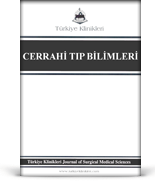Aortokaval bası sendromu ve rejyonal blok birlikte olduğunda anne adayında hipotansiyona neden olurlar. Aortokaval basıya bağlı hipotansiyon gebeliğin son dönemlerinde görülür. Sendromun gelişiminde en önemli faktörler uterusun şekli ve bebeğin duruşu ile annenin pozisyonudur. Hikayede sırtüstü poziyonda baygınlık hissinden kardiyovasküler kollapsa kadar değişen bulgular vardır. Uterusun kan akımı büyük oranda anne adayının kan basıncına bağımlı olduğundan annedeki hipotansiyon uterus perfüzyon basıncını da azaltır. Anne adayları aortokaval basıyı azaltmak için bu duruma uygun bir uyuma pozisyonu geliştirirler. Obstetrik anestezi uygulaması sırasında hipotansiyonu önlemek için sıvı yüklemesi sempatomimetik ilaçlar anne adaylarına pozisyon verilmesi gibi pek çok yöntem geliştirilmiştir. Bilinen geleneksel yöntemlere rağmen Obstetrik anestezi uygulamalarında hipotansiyonu tek başına önleyen bir yöntem bulunamamıştır. Aspirasyon pnömonisi günümüzde nadir ancak ölümcül sonuçları olabilen bir komlikasyondur. Gerçek sıklığı tam olarak bilinmese de en sık anestezinin yetersiz olduğu indüksiyon ve larengoskopi döneminde ve entübasyon güçlüğü olgularında görülür. Tedavisi semtomatik ve destekleyici olup koruyucu önlemler tedavinin başında gelir. Planlı ya da acil olsun tüm anne adaylarına aspirasyon profilaksisi yapılmalı, midesi dolu olgularda ise hızlı indüksiyon teknikleri uygulanmalıdır. Entübasyon ve havalandırma güçlüğü anestezide beyin hasarı, kardiyovasküler yetmezlik ve ölüm gibi hayati sonuçları olabilen durumlardır. Obstetrik anestezide morbidite ve mortalitenin en önemli sebebidirler. Gebeliğe bağlı fizyolojik değişiklikler nedeniyle en iyi ve güvenli hava yolunu sağlayabilmek için anestezi öncesi muayene çok önemlidir. Tüm anestezi kliniklerinde hava yolu müdahalelerine yönelik algoritmalar ve ekipman bulunmalı anetezistlerin becerileri arttırılmalıdır.
Anahtar Kelimeler: Aortokaval bası sendromu, aspirasyon pnömonisi, regjyonal bloğa bağlı hipotansiyon, entubasyon güçlüğü, havalandırma güçlüğü
Aortocaval Compression syndrome and regional bloc's together causes maternal hypotension. Hypotension due to aortocaval compression is a late sign of pregnancy. Major determinants in its development are the size of the uterus and exact maternal and fetal position. History of supine symptoms in a spectrum of unspecific complaints to severe maternal hypotension, loss of consciousness, cardiovascular collapse, and consecutive fetal depression makes diagnosis likely. Because Uterine blood flow is poorly auto regulated and strongly dependent upon maternal blood pressure the fall in arterial blood pressure and the rise of the uterine vein blood pressure led to a decrease of the perfusion pressure across the uterus. Pregnants adapts to a sleeping position that reduced the likelihood of aortocaval compression syndrome. During anesthetic care of parturients both the mother and fetus need to be protected from hypotension. Many methods for preventing hypotension during regional bloc for cesarean delivery have been investigated. Tech¬niques currently in use for preventing hypotension are intravenous fluid prehydration, sympathomimetic drugs, and physical methods such as positioning of the parturient. In spite of these traditional preventative measures post-spinal hypotension still re¬mains as an unsolved clinical problem. An effective single method for preventing hypotension during regional bloc for obstetric anesthesia has not yet to be described. Future research directed toward investigation of hypotensive measures are still in need. To prevent potential complications of mother to fetus the anesthesiologist must take all necessary steps to avoid hypotension in obstetric care. Aspiration pneumonitis is now a rare but a major cause of anesthesia-related death event associated with general anesthesia for caesarean section in obstetric practice. The true incidence of preoperative aspiration pneumonitis is difficult to determine. It usually occurs during induction and laryngoscopy, more so when intubation is difficult and in the presence of inadequate anesthesia. The single most important means of treating aspiration of gastric contents is its prevention. All mothers for cesarean section in elective or emergency require aspiration prophylaxis. Rapid sequence induction is the standard of care for non-fasted emergency cases. The treatment of pulmonary aspiration is primarily supportive, and may range from observation, respiratory support and physiotherapy to management of septic shock and severe lung injury. Ventilation and intubation are life threatening parts of the anesthetic care against time. The inability to secure the airway, with consequent failure of oxygenation and ventilation leads to hypoxia followed by brain damage, cardiovascular dysfunction, and finally death. Difficult or failed intubation following induction of general anesthesia for cesarean delivery remains the major contributory factor to anesthesia-related maternal complications. Careful and timely preanesthetic evaluation of all parturients is essential to consider the best method of maintaining and protecting the airway and whether problems with airway management are likely because the expected nature of the physiologic changes due to pregnancy. Each anesthesiology department and anesthetist should establish guidelines/algorithms and have the knowledge of equipment and extensive skills in airway management.
Keywords: Aortocaval compression syndrome, aspiration pneumonitis, regional bloc induced hypotension, intubation difficulty, ventilation difficulty







.: Process List